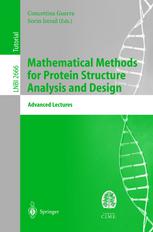

Most ebook files are in PDF format, so you can easily read them using various software such as Foxit Reader or directly on the Google Chrome browser.
Some ebook files are released by publishers in other formats such as .awz, .mobi, .epub, .fb2, etc. You may need to install specific software to read these formats on mobile/PC, such as Calibre.
Please read the tutorial at this link: https://ebookbell.com/faq
We offer FREE conversion to the popular formats you request; however, this may take some time. Therefore, right after payment, please email us, and we will try to provide the service as quickly as possible.
For some exceptional file formats or broken links (if any), please refrain from opening any disputes. Instead, email us first, and we will try to assist within a maximum of 6 hours.
EbookBell Team

0.0
0 reviewsThe papers collected in this volume reproduce contributions by leading sch- arstoaninternationalschoolandworkshopwhichwasorganizedandheldwith thegoaloftakinga snapshotofadiscipline undertumultuous growth. Indeed, the area of protein folding, docking and alignment is developing in response to needs for a mix of heterogeneous expertise spanning biology, chemistry, mathematics, computer science, and statistics, among others. Some of the problems encountered in this area are not only important for the scienti?c challenges they pose, but also for the opportunities they disclose intermsofmedicalandindustrialexploitation. Atypicalexampleiso?eredby protein-drug interaction (docking), a problem posing daunting computational problems at the crossroads of geometry, physics and chemistry, and, at the same time, a problem with unimaginable implications for the pharmacopoeia of the future. The schoolfocused on problems posed by the study of the mechanisms - hind protein folding, and explored di?erent ways of attacking these problems under objective evaluations of the methods. Together with a relatively small core of consolidated knowledge and tools, important re?ections were brought to this e?ort by studies in a multitude of directions and approaches. It is obviously impossible to predict which, if any, among these techniques will prove completely successful, but it is precisely the implicit dialectic among them that best conveys the current ?avor of the ?eld. Such unique diversity and richness inspired the format of the meeting, and also explains the slight departure of the present volume from the typical format in this series: the exposition of the current sediment is complemented here by a selection of quali?ed specialized contributions.